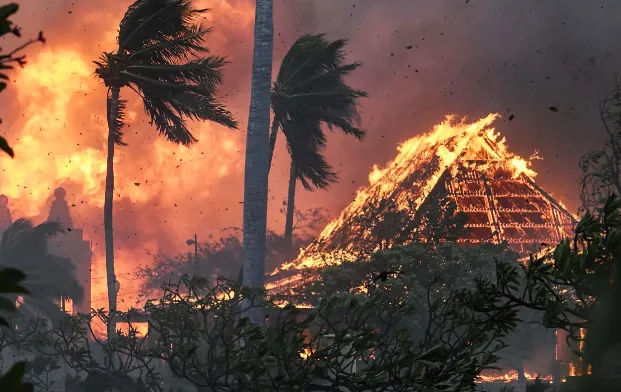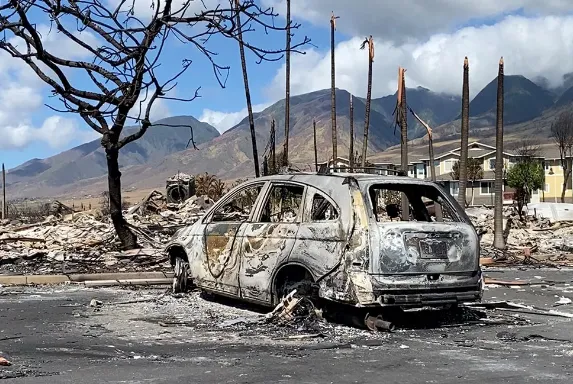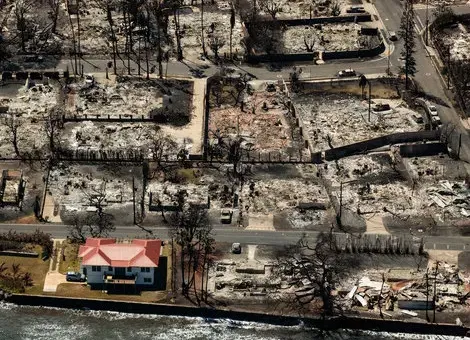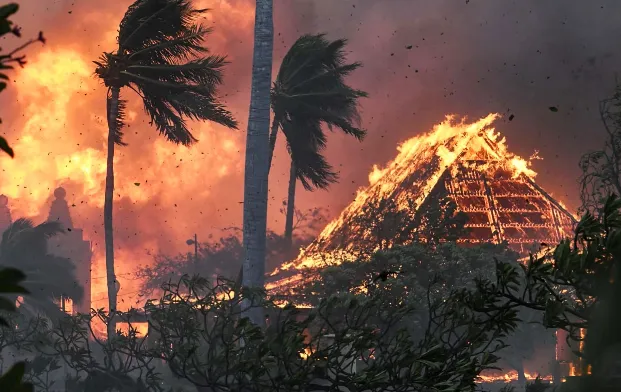Surviving the Inferno: How the Maui Fire Reshaped One Family’s Story

Surviving the Inferno: How the Maui Fire Reshaped One Family’s Story

In the aftermath of the catastrophic Lahaina fire, 77-year-old Sue Brimeyer’s harrowing escape with her grandson Kapono has become a symbol of resilience amidst the devastation. The wildfire, the deadliest in over a century in the U.S., swept through Maui on August 8, 2023, obliterating homes and deeply affecting countless lives.

Table of Contents
ToggleA Night of Desperation
For Brimeyer, the night of the fire was a fight for survival. The acrid smell of burning homes and the roaring blaze left an indelible mark on her. “It was obvious people wouldn’t survive – you can’t outrun a fire like that,” she recalls. The inferno claimed 102 lives, with the latest fatality recorded in March, and showcased Hawaii’s long-standing struggles with environmental and social issues.
From Comfort to Chaos
What began as a distant concern quickly turned into an immediate crisis. Early in the day, Brimeyer noticed smoke but believed it was controlled. Soon, embers fell around her, and flames engulfed the street. Without any warning or sirens, the fire’s sudden onset forced Brimeyer into survival mode.
As she navigated the blazing streets, Brimeyer found a momentary refuge at the Lahaina Hongwanji Mission. With her grandson, who is nonverbal, she jumped from house to house, seeking shelter amidst the ashes and smoke. Her home, along with her daughter Kehaunani Kaʻauwai’s house—a family heirloom from the Great Māhele era—was reduced to nothing but rubble.
A Family Torn Apart
Kaʻauwai, trapped by a towering wall of smoke, struggled to escape her burning neighborhood. Power outages and blocked roads complicated her attempts to reach her mother. With the help of a student, she managed to break free, eventually finding safety further down the Maui coastline.
Reuniting with her mother the following morning, Kaʻauwai was overwhelmed with relief and disbelief. “I am just so glad she didn’t just say OK I’m done,” Kaʻauwai said, praising her mother’s bravery and resourcefulness.

Cultural and Historical Loss
The fire devastated more than 2,200 structures and caused around $6 billion in damage. The destruction included historic Native Hawaiian sites like Waiola Church, an important cultural landmark. For Brimeyer and Kaʻauwai, the loss was not only physical but deeply cultural, with many cherished possessions reduced to ashes.
Renewal Amidst Ruins
Despite the immense loss, there are signs of hope. Brimeyer’s grandson, Keoni Hassett, now works to clear the debris and restore the land. He is optimistic about Lahaina’s future, noting the resurgence of native plants and fresh water springs. “We’re going to have springs in Lahaina again like the 1800s,” he said.
Brimeyer has purchased a new home in Kihei but remains determined to return to Lahaina. “Lahaina means a lot to us – my whole family,” she said. Her plans to rebuild symbolize not just a return to a place, but a reaffirmation of her deep connection to it.
Ongoing Struggles and Hope
The Maui fire has reshaped lives and communities, highlighting the need for continued support and recovery efforts. A recent survey indicates that survivors face ongoing challenges, including food insecurity and housing instability. Yet, amid the rebuilding efforts, there is a shared hope for renewal and restoration.
Brimeyer’s story reflects the broader experience of many affected by the fire—a blend of profound loss, relentless struggle, and an enduring hope for a better future.



